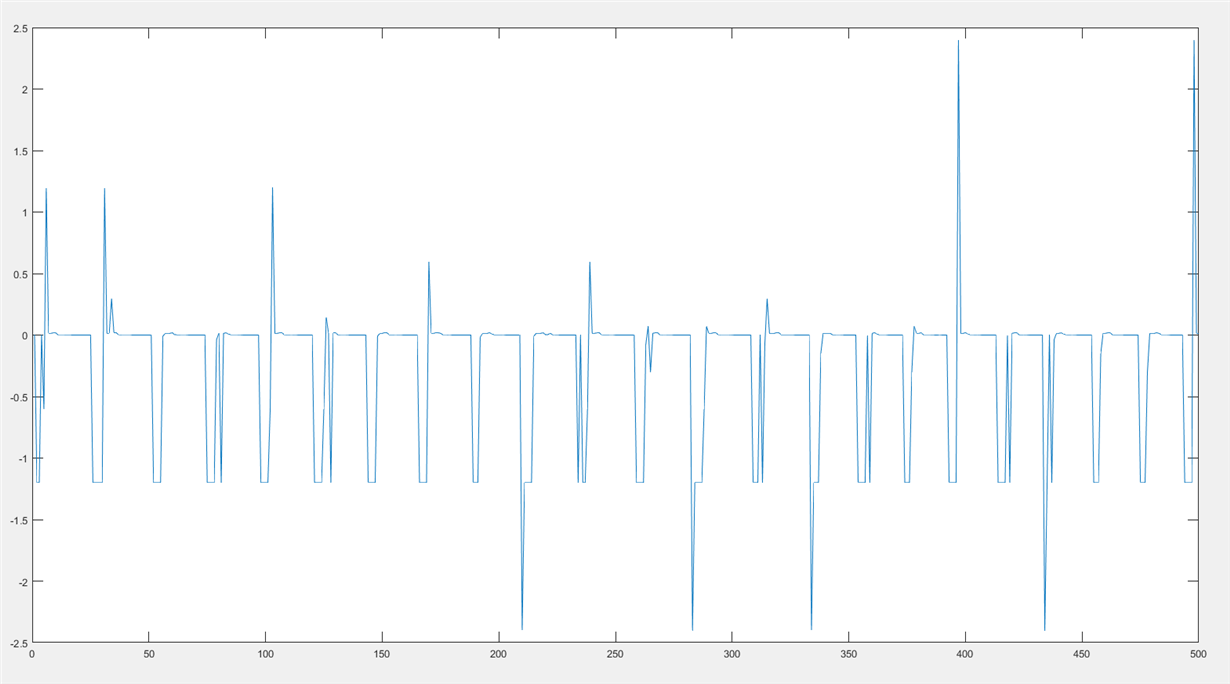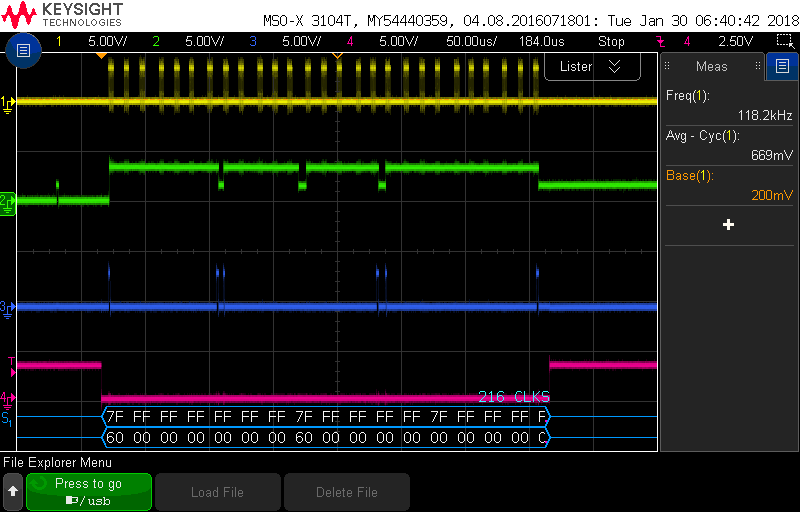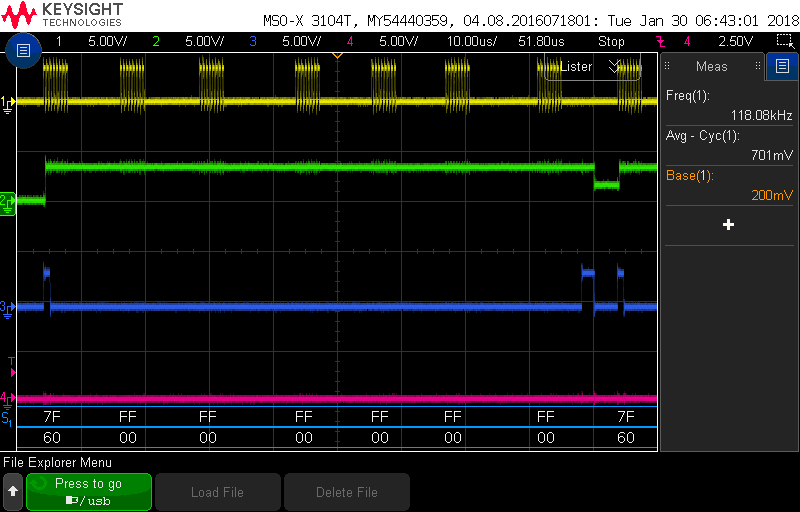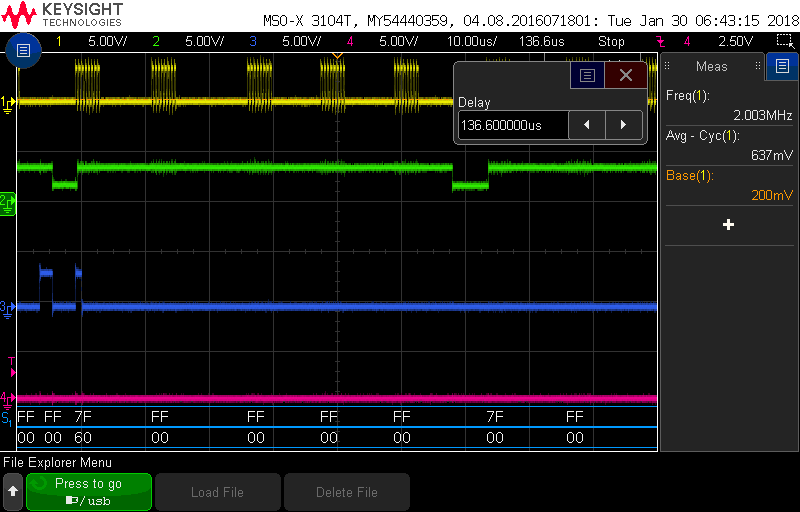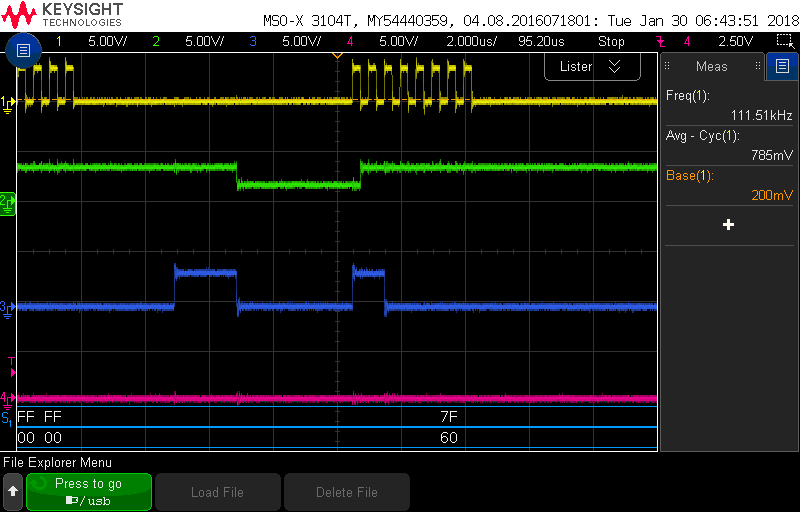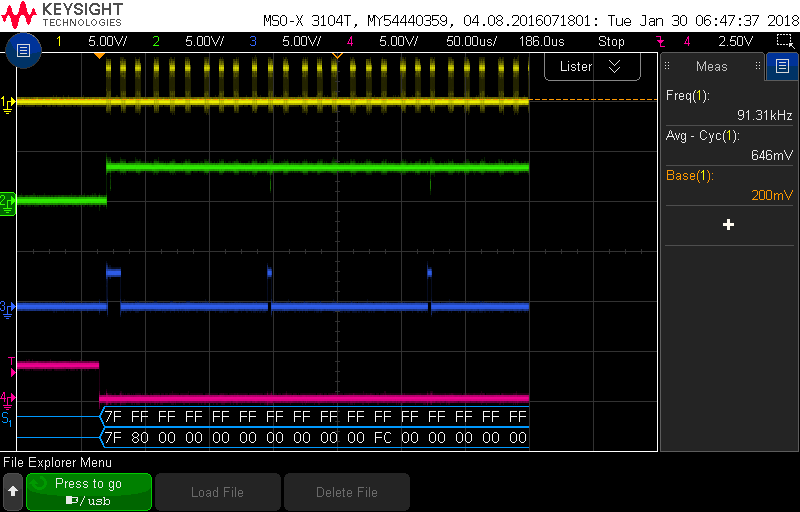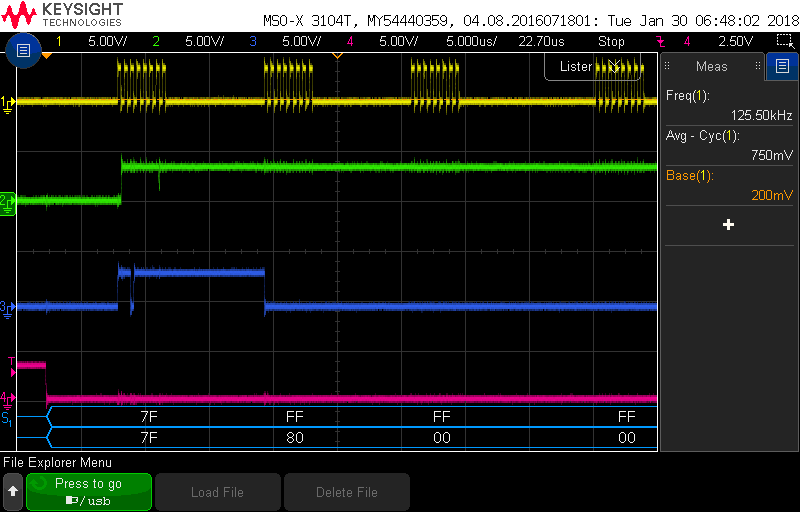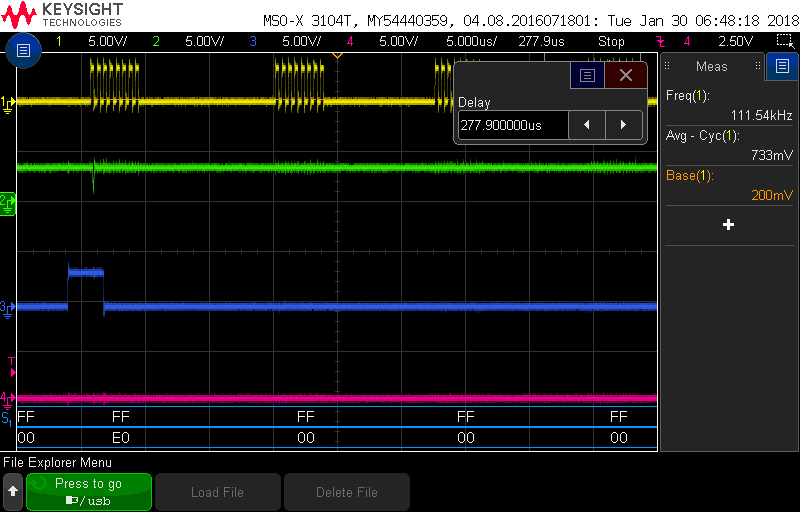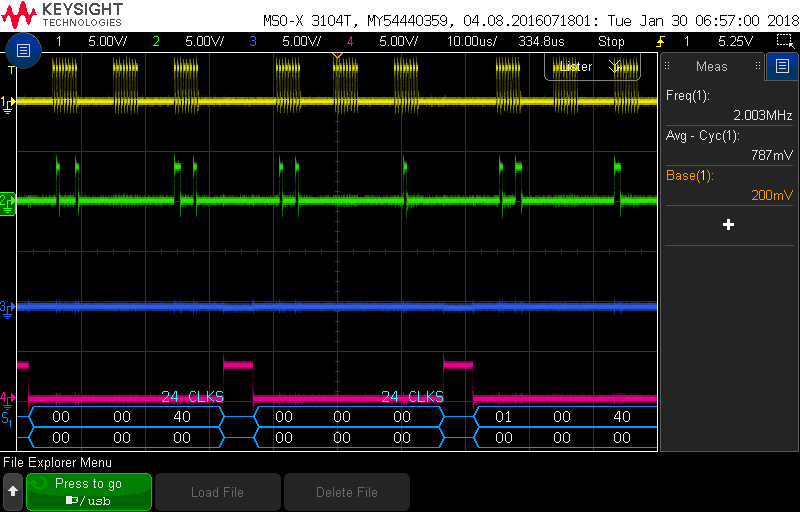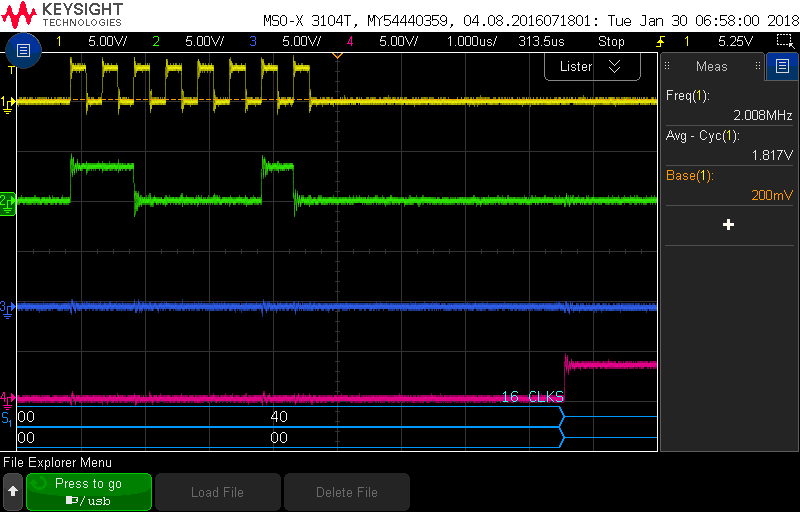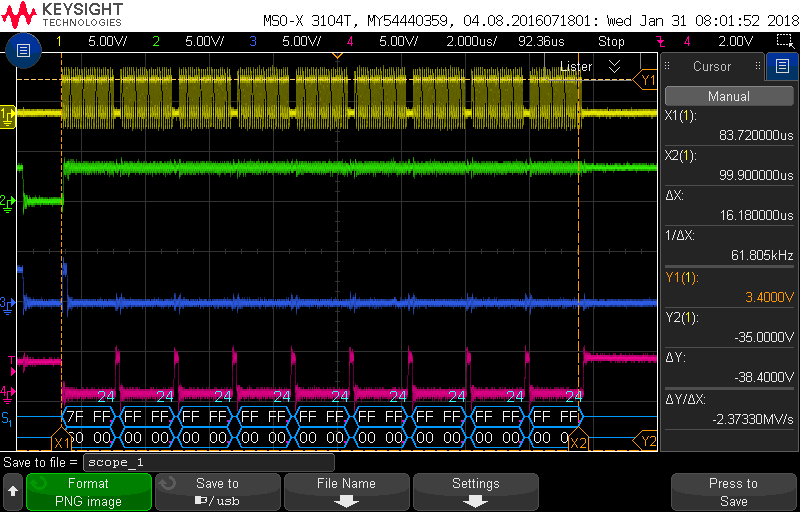Hi, thank you for reading my post.
My team is building a 16-channel EMG acquisition device by using two ads1298. We use bipolar +-2.5V power supply, internal reference of 2.4V and internal oscillator. For each channel, before the signal going into the adc input, the signal will go through a instrumental amplifier, a high pass filter with about 15Hz cutoff, and a low pass filter for anti-aliasing. We followed the power-up sequence for the adcs. The setup of the adc seems fine. we were able to set and read back all registers. However, the adc data acquired include some noise and spikes that we did not see (using oscilloscope) on the channel input pins. Since we use single ended configuration, all negative inputs are tied to the ground. Following are some data sample we acquired from the adc and plotted with MatLab. Each plot contain 500 samples, the y-axis is voltage.
1. Tested with ADS1298 ECGFE eval board. We disconnected the DSP and the ADS1298 on the eval board, but keeping the power supply connection to supply power to the ADS1298. Then we connected the ADS1298 to our PIC microprocessor. The following data were acquired on the channel that is set to normal operation, gain of 1, normal electrode input. Note that there was nothing connected to the channel input. We expected to get 0V for all samples, but we saw these periodic spikes.
2. The setting is pretty much the same. The samples were also obtained from the testing with eval board. The only difference is that the channel is set to power-down, gain of 1, input-shorted.
3. We also have a ads1298 soldered on a breakout board and implemented on a bread board. Following is the data acquired with 500Hz, 2Vpk-pk sine wave input. The setting is 8kSPS, and gain of 1.
4. Same setup in 3, but with both positive input and negative input shorted to ground
We also ran similar tests on the PCB board we designed with two ads1298 and a PIC microcontroller. The acquired data had similar spikes in example 1 and 2.
We tested the communication between the microcontroller and MatLab. There is no problem in transmitting the data over USB port. We were also able to verify the status byte for each sample.
Does anyone know the possible causes of this issue and how to fix it? Thanks in advance.


